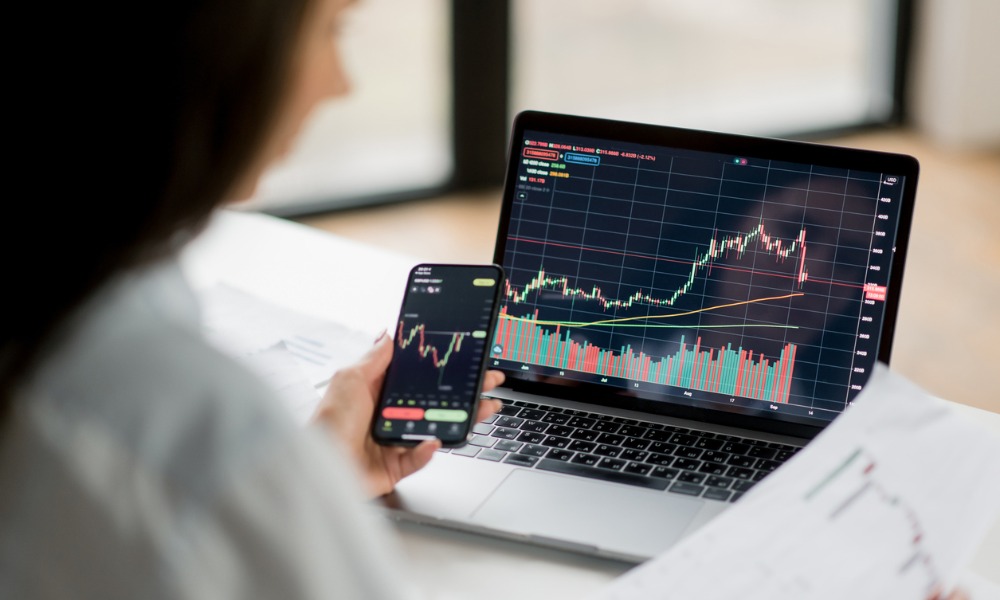

Investors conflicted over the outlook for the US dollar are increasingly favoring trades that avoid the world’s reserve currency.
From shorting the Swiss franc against the Japanese yen, to buying the British pound against the New Zealand dollar, there’s been an increase in trade recommendations over recent weeks that stand to profit irrespective of how Federal Reserve policy and the US elections impact the greenback.
“Investors are trying to stay clear of the dollar and take more cross-currency exposure,” said Elsa Lignos, global head of FX strategy and head of EMEA institutional FX sales at RBC Capital Markets. “With the election outcome so uncertain, it’s difficult for people to bake that into their forecasts and position.”
It’s a peculiar state for the foreign-exchange market, which tends to follow the US currency’s lead. The dollar typically accounts for one side of 88% of all trades in the $7.5 trillion-a-day market, according to the Bank for International Settlement’s latest turnover survey. But as the Fed debates how fast to cut interest rates and the election approaches, the risk of taking a strong directional view is too big for some.
Long-term investor positioning in the greenback is the most neutral in two-and-half years, according to State Street Global Markets, the trading arm of the US custodial bank which has oversight of over $44 trillion assets.
The likes of Wells Fargo & Co., RBC, Allspring Global Investments and State Street Global Advisors are holding off on making big dollar bets until later in the year, citing political uncertainty. While speculative market players including hedge funds added to bets against the dollar last week, their positioning is not as extreme as it was earlier this month.
Instead, markets are turning to cross-currency pairs. Shorting the franc against the yen is RBC’s recommended play on central bank divergence, while Allspring is betting on the euro slumping against the Norwegian krone.
“The euro should be weaker,” said Lauren van Biljon, head of rates and FX for the global fixed income team at Allspring. “The dollar’s harder to play purely because there’s so much happening in that cross right now on the political side of things.”
Similarly, money-managers at State Street Global Advisors are waiting until after the November election to position for a weaker dollar.
“Let’s get through that growth uncertainty and let’s see how the election plays out,” said Aaron Hurd, portfolio manager at State Street Global Advisors, adding that the dollar could potentially fall “much lower” once markets had more clarity on these issues.
With Vice President Kamala Harris only narrowly leading Donald Trump in the polls, conviction on the impact of the upcoming election on the dollar has ebbed.
The outlook for the Fed’s policy path is also a factor spurring uncertainty around the dollar’s trajectory, according to JPMorgan and Nomura.
Bloomberg’s dollar index has fallen around 3% since the beginning of August, when one of the weakest non-farm payroll prints since the pandemic cemented the path for the Federal Reserve to begin cutting interest rates in September. Markets are keenly awaiting further job data this Friday for signs the US central bank will follow with a second half-point reduction in November.
JPMorgan strategists led by Meera Chandan are opting to keep overall dollar exposure “light and net-neutral” until further US labor-market data gives better clarity on the rate path.
Nomura expects sterling and the Australian dollar to rise against the New Zealand dollar rather than the US dollar, on the view that markets are pricing in too much in terms of Fed easing.
“US data momentum isn’t that bad so it’s hard to project significant dollar weakness against other G-10 currencies right now,” said Dominic Bunning, head of G-10 FX strategy at Nomura. “There’s also volatility risk going into the elections, so we try to avoid some of that noise by expressing views where there is obvious macro divergence but less exposure to the US story.”
“Options pricing shows the market is modestly bearish on the dollar over the next month but that changes when the US elections come into focus. While some traders are choosing not to take on big wagers ahead of the vote, there is plenty of demand for the greenback further out. That’s down to the currency’s haven status and speculation that the next administration could follow dollar-supportive policies.”
-Vassilis Karamanis, FX strategist
Positioning around election risk will pick up in October, said Brad Bechtel, global head of FX at Jefferies, adding that buying dollars versus the Mexican peso and Chinese yuan continues to be a way to play the so-called Trump trade. But beyond those bets, traders may stay away from the greenback, he said.
Some market participants are wagering a second Trump administration would lead to more friction between Washington and its biggest trading partners, including Mexico and China. The Republican candidate has floated plans to add a 10% tariff on all imports, plus 60% on China if he wins in November.
To avoid election risk, macro trades like short franc-yen have been plays for investors who remain on the fence about the dollar, according to Wells Fargo. This is weakening global macro strategist Aroop Chatterjee’s bias for the dollar to gain in the coming months.
“We have low conviction on the dollar because of the election outcome,” Chatterjee said. “It particularly clouds the view for the year-end and for early 2025.”

Relationships are key to our business but advisors are often slow to engage in specific activities designed to foster them.

Whichever path you go down, act now while you're still in control.

Pro-bitcoin professionals, however, say the cryptocurrency has ushered in change.

“LPL has evolved significantly over the last decade and still wants to scale up,” says one industry executive.

Survey findings from the Nationwide Retirement Institute offers pearls of planning wisdom from 60- to 65-year-olds, as well as insights into concerns.
Streamline your outreach with Aidentified's AI-driven solutions
This season’s market volatility: Positioning for rate relief, income growth and the AI rebound
